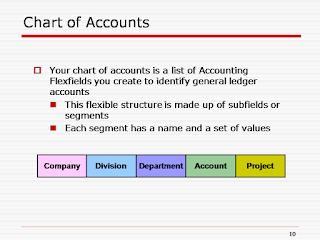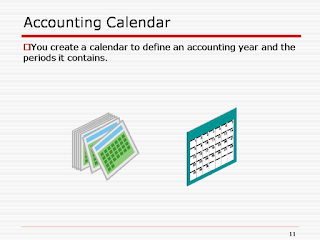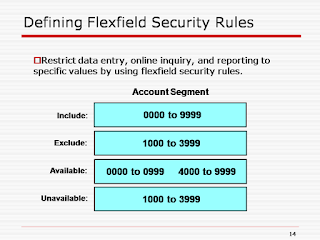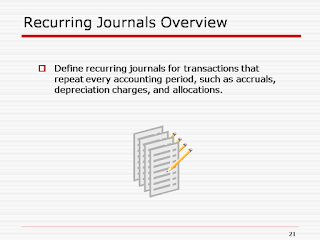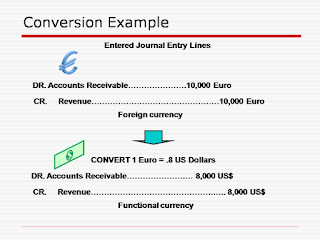https://erppresentation.blogspot.com/2019/05/what-is-erp-and-why-do-we-need-it.html
------------------------------------------------------------------------------------------------------------
In Simple,
Enterprise Resource Planning means, planning of Resources (Human
Resources, Financial Resources, Raw Material and Machinery Resources….) in the Enterprise
to perform work at backend and produce end Product or Service.
Enterprise: Organization
or Institutions working on huge level in which many Labor is working and contains
many different Departments or Branches. ERP system is useful for Large Organizations
and mainly for those who have different Branches/BU.
Resource: In
Large Organizations you have Human Resources, Financial Resources, Raw Material
and Machinery Resources to make end Product or produce end Service by utilizing
the Resources.
Planning: How you
plan to produce end Product or Service.
An Enterprise consists of many Departments such as, Finance
Department HR, Inventory, Treasury, Production and Planning Department. In ERP
we have Modules for every Department. Top ERP Providers like, SAP, Oracle,
Microsoft Dynamics and PeopleSoft provides Module for each Department. If you require a Financials Module so you can buy License for Financial Module from any ERP
provider and can implement according to your Business Process and requirements.
If you require Module for Supply Chain so you can buy Licence for the same. In
the same way you can Implement HR, Payroll and many different Modules according
to your Business needs.
ERP is a Business Management Software which is used to
integrate all the business activities in any organization.
1.
Integrate Financial Information.
2.
Integrate Customer Order Information.
3.
Supplier Information.
4.
Inventory Information.
5.
Production Planning Information.
6.
HR Information.
7.
Standardize and Speedup Operation Process.
A typical Enterprise has many Departments/Branches/BU. They continuously
share/exchange Data and communicate with each other. The success of any
Department lies in effective Communication and Data Exchange within the
Departments/Branches/BU as well as associated Third Party Vendors, Outsources
and Customers.
Enterprise Software Systems can be classified into two
types:
1. Decentralized Systems:
In a Company with Decentralized System of Data Management,
data is maintained locally at the individual Departments/Branches/BU and all do
not have access to data of others.
The Customer approaches the Sales team for a product, but
this time he needs the product on an urgent basis. The sales team do not have real
time Information access to the Products Inventory. So, they approach the
Inventory Department to check the availability of the Product. This Process
takes time and the Customer chooses another Vendor, leading to Loss of Revenue
and Customer Dissatisfaction. Now, Suppose the Product is out of Stock and Sales
team approaches the Production Planning team to manufacture the Product for
future use. The Production Planning team
checks the availability of Raw Material Required. Raw Material Information is separately
stored by Production Planning as well as the Inventory Department. Thus, Data Maintenance
Cost goes up. A particular Raw Material required to manufacture the Product is available
in the inventory but according to the Database of Production Planning team, the
Raw material is out of stock. So, they go ahead and buy the required material. Thus,
material as well as Inventory Cost goes up. Once the Raw Material is available
the shop floor department suddenly realizes they are short of Workers. They
approach the HR who hire temporary employees at higher then market price. Thus,
Labor Cost Increases. The Production Planning fails to update the Finance Department
on the material they have purchased. The Finances Department faces the Payment
deadlines set by the Vendor causing the Company loss of its Reputation.
Major Problems
1.
No Real time Inventory Information.
2.
Loss of Revenue and Customer Dissatisfaction.
3.
Data Maintenance Cost goes up.
4.
Max and Min Inventory Planning Issues.
5.
Material as well as Inventory Cost goes up.
6.
Labor Cost Increases.
7.
Loss of Companies Reputation.
8.
Time and Money Consuming Process.
9.
Risk of Duplication of Data.
10.
Due to timely Process Customer will not satisfy.
11.
Immediate Raw Material Purchasing Issues.
2. Centralized Systems also called ERP:
Data is maintained at a central Location and is shared with
various Departments/Branches /BU.
Department have access to Data/information of other Departments/Branches/BU.
A Customer approaches the Sales team to buy a product on an urgent
basis. The Sales team has real time information access to the Products in the
Inventory which is updated by the Inventory Department in the Centralized
System. The sales team responds on time leading to increased Revenue and
Customer Delight. In case manufacturing is required the sales team updates the
centralized database. Production planning Department is auto updated by the
centralized database for requirements. The Production planning team checks the availability
of Raw materials required via central Database which is updated by the Inventory
Department. Thus, Data Duplication is avoided and accurate Data is made
available. The Shop floor team updates their man power stats regularly in the
central database which can be accessed by the HR Department. In case of
shortage of Work force, the HR team starts recruitment process to hire a
suitable candidate at Market price. Thus, Labor cost goes down. Payments to Supplier
can be made on time after verification of the products in the centralized
system.
Internal Benefits of
ERP
1.
Integration of a Single Source of Data.
2.
Data Duplication is avoided and accurate Data is
made available.
3.
Provides information across Departments in real
time.
4.
Provides Control over various business Processes.
5.
Better Inventory Management.
6.
Effective Human Resources Management.
7.
Increased Revenue and Customer Delight.
8.
Labour cost goes down.
9.
Increased Productivity, Inventory management, Promote
Quality.
10.
Reduce Operating Costs and Improve Internal
Communication.
External Benefits of
ERP
1.
Improved Customer Service and Order Fulfilment.
2.
Improve Communication with Supplier and Customers.
3.
Improve Customer Service.
4.
Enhanced Competitive Position and Increase sales
and Profits.
Phases in ERP:
ERP implementation is broken up into three phases:
discovery, implementation, and results. In the initial phase, we install
the software, build a prototype, and train your staff. Then we test the
ERP system, create reporting templates, and run more targeted training
sessions. Finally, we finalize the model of your ERP system, conduct
readiness assessments, and go live.
Top Benefits:
Efficiency
An ERP solution eliminates repetitive processes and greatly
reduces the need to manually enter information. The system will also streamline
business processes and make it easier and more efficient for companies to
collect data, no matter what department they’re working in.
Forecasting
Enterprise resource planning software gives your users, and especially
managers, the tools they need to create more accurate forecasts. Since the
information within ERP is as accurate as possible, businesses can make
realistic estimates and more effective forecasts.
Collaboration
Nobody wants to run a soloed business with each department functioning separate
from the other. Collaboration between departments is a crucial and often
necessary part of the business. With the data entered into ERP systems being
centralized and consistent, there’s no reason why departments can’t work
together. The software also touches on almost every aspect of a business, thus
naturally encouraging collaborative, interdepartmental efforts.
Scalability
Did you know? Structured ERP systems allow the addition of new users and
functions to grow the initially implemented solution over time. When your
business is ready to grow or needs more resources, enterprise resource planning
software should be able to facilitate that growth.
Integrated
Information
No more issues with data spread across separate databases; all information
will be housed in a single location. This means you can integrate platforms
like your CRM software with the ERP system,
keeping data consistent, accurate, and unique. Know your customer, their
orders, and your inventory, all in one place.
Reporting
ERP software helps make reporting easier and more customizable. With
improved reporting capabilities, your company can respond to complex data
requests more easily. Users can also run their own reports without relying on
help from IT, saving your users time to use toward other projects.
Flexibility
Modern ERP software systems are robust, flexible, and configurable. They
are not a one-size-fits-all proposition but can be tailored to the unique needs
of a business. ERP systems also can adapt to the ever-changing needs of a
growing business, ensuring you won’t have to buy a new solution once your needs
change or your business grows.
Security
Data security isn’t a worry when you have an enterprise resource planning
solution in place. A new system will improve the accuracy, consistency, and
security of data, all through built-in resources and firewalls. Restrictions to
data can also be enhanced by managers of the solution, so you can make your own
software as secure as you’d like.
------------------------------------------------------------------------------------------------------------
In Simple,
Why do we need ERP?
When your business starts dropping the
ball, lacking proper communications, or you observe you are giving more time in
paperwork than in actually running the business, you need to have an ERP
system. today’s businesses need technologies with complete functions which can
bridge the gap between business processes and people.
What is ERP?
To run a large organization with multiple
departments and teams successfully, an ERP system gives a helping hand by
synchronizing all information and communication within the organization. ERP is
a combination of software and company’s activities performed to manage
operations. With ERP software, the entire project value chain is aligned and
critical processes are streamlined effectively.
Why do we prefer ORACLE over SAP?
Oracle provides improved financial
management and reporting reliability and ties in GRC requirements. Oracle
prides itself on risk management solutions that help to enforce enterprise-wide
compliance and automate some forms of compliance in various industries. These
tools help to prevent things like cash leakage and bring a level of policy
enforcement that helps companies feel confident about the risks that they face.
But SAP’s risk management tools are still good and can help your business
identify and better understand risk factors.










